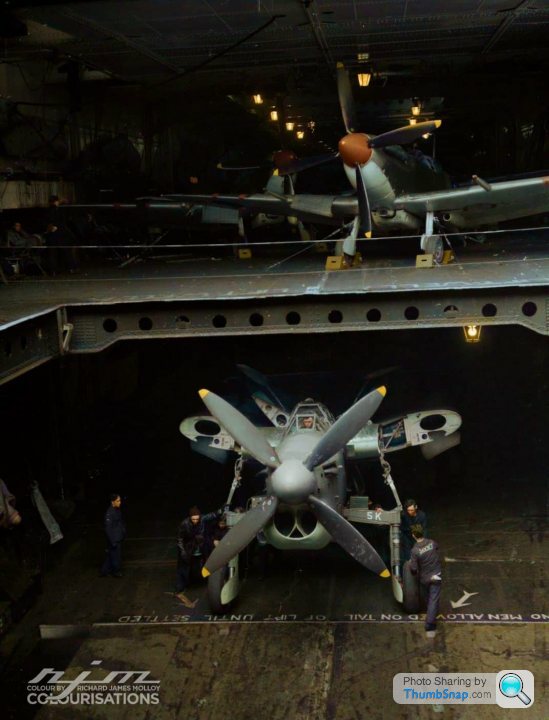Post amazingly cool pictures of aircraft (Volume 2)
Discussion
Lily the Pink said:
Eric Mc said:
I'm amazed by this sort of thing; I recall a Lynx being deliberately rolled back at Westlands in the 70s. Was it within the design parameters that the airframe/wings should be able to withstand the abnormal stresses that this would impose ?Lily the Pink said:
I'm amazed by this sort of thing; I recall a Lynx being deliberately rolled back at Westlands in the 70s. Was it within the design parameters that the airframe/wings should be able to withstand the abnormal stresses that this would impose ?
IIRC a barrel roll is only a 1g manoeuvre so apart from things falling out in the flight deck when inverted, no big issue on the airframe really. Helicopter are a slightly different kettle of fish but not as outrageous a thing as you'd first expect.FourWheelDrift said:
Looks like it needs a good dusting and some back to black on the tyres 
The tyres on the XB-70 (and the SR-71/A-12) always had a greyish/silver colour to the sidewalls. The tyres were impregnated with aluminium to help cope with the high levels of heat they would experience at high mach numbers (Mach 3 plus)
XB-70

The weird angle of the nearer set of wheels was due to a malfunction.
SR-71

Dr Jekyll said:
Lily the Pink said:
Eric Mc said:
I'm amazed by this sort of thing; I recall a Lynx being deliberately rolled back at Westlands in the 70s. Was it within the design parameters that the airframe/wings should be able to withstand the abnormal stresses that this would impose ?Lily the Pink said:
I'm amazed by this sort of thing; I recall a Lynx being deliberately rolled back at Westlands in the 70s. Was it within the design parameters that the airframe/wings should be able to withstand the abnormal stresses that this would impose ?
Standard airshow stunt for a lynx is a back flip from the hover. Something to do with it having a solid rotor head rather than floating means its a lot more aerobatic than most helicopters. It can even generate negative lift, useful when you want to keep it stuck to the deck of a moving ship.RizzoTheRat said:
Standard airshow stunt for a lynx is a back flip from the hover. Something to do with it having a solid rotor head rather than floating means its a lot more aerobatic than most helicopters. It can even generate negative lift, useful when you want to keep it stuck to the deck of a moving ship.
to a simple man what's the difference between solid and floating rotor head? I assume you can still change the pitch of the blade as that's what gives you the neg lift?There are a number of different designs for rotor heads. Some helicopters have what is called a "rigid" or "semi-rigid" rotor head which means the blades are attached to the rotor head in a different way to the non-rigid traditional type of rotor head. Without going into technical detail, a semi or fully rigid system means that the blades don't flop around so much which means they do not "cone" to the same extent as they would on a fully articulated head.
From what I recall, the Bolkow Bo105 and its Eurocopter descendants all have this semi-rigid system,
From what I recall, the Bolkow Bo105 and its Eurocopter descendants all have this semi-rigid system,
Teddy Lop said:
RizzoTheRat said:
Standard airshow stunt for a lynx is a back flip from the hover. Something to do with it having a solid rotor head rather than floating means its a lot more aerobatic than most helicopters. It can even generate negative lift, useful when you want to keep it stuck to the deck of a moving ship.
to a simple man what's the difference between solid and floating rotor head? I assume you can still change the pitch of the blade as that's what gives you the neg lift?In a rigid rotor the blades are flexibly attached to the hub instead of through hinges. "Loads from flapping and lead/lag forces are accommodated through rotor blades flexing, rather than through hinges. By flexing, the blades themselves compensate for the forces that previously required rugged hinges. The result is a rotor system that has less lag in control response because of the large hub moment typically generated."
Very good video explaining in basic simple terms how each of the three rotor head system work.
https://youtu.be/7gM3rMDpJt4
Speaking of mast bump I learnt in an R22 which is a teetering design. You have to keep the rotor head under positive g. This is what killed Steve Hislop famous TT and super bike rider. Entered a turn in bad visibility in a valley. Tried to do a 180 and allowed rotor rpm to decay and then induced negative g as he tried to descend rapidly.
http://news.bbc.co.uk/1/hi/scotland/4538431.stm
https://youtu.be/7gM3rMDpJt4
Speaking of mast bump I learnt in an R22 which is a teetering design. You have to keep the rotor head under positive g. This is what killed Steve Hislop famous TT and super bike rider. Entered a turn in bad visibility in a valley. Tried to do a 180 and allowed rotor rpm to decay and then induced negative g as he tried to descend rapidly.
http://news.bbc.co.uk/1/hi/scotland/4538431.stm
Edited by MB140 on Saturday 7th November 11:03
Very cool.
I was fortunate enough to be given access to the flight deck of one of these 74s recently.
A couple of pictures I took:
NASA Yoke
https://www.instagram.com/p/B8hIpAEBuPl/
Carrier / Orbiter Circuit Breaker (removed for the relocation flight down to Houston). This circuit used to jettison the orbiter in an emergency
https://www.instagram.com/p/B8YYvqEBliG/
I'm andy_a320 on Insta if anyone fancies a follow. Mostly aviation stuff from my workplace and travels.
I was fortunate enough to be given access to the flight deck of one of these 74s recently.
A couple of pictures I took:
NASA Yoke
https://www.instagram.com/p/B8hIpAEBuPl/
Carrier / Orbiter Circuit Breaker (removed for the relocation flight down to Houston). This circuit used to jettison the orbiter in an emergency
https://www.instagram.com/p/B8YYvqEBliG/
I'm andy_a320 on Insta if anyone fancies a follow. Mostly aviation stuff from my workplace and travels.
Eric Mc said:
I'm guessing so. The one I was showed around was an ex-JAL airframe (the brewers even had the JAL logo on still). Apparently when it was brought to the museum it was caked in tobacco stains on the flight deck with ash all over the floor. The NASA pilots were fairly legendary for sitting there chain-smoking all through the flights.I like the notice on the mounting mounts: "Attach Orbiter here, Note: Black side down"
https://en.wikipedia.org/wiki/Shuttle_Carrier_Airc...
https://en.wikipedia.org/wiki/Shuttle_Carrier_Airc...
Teddy Lop said:
RizzoTheRat said:
Standard airshow stunt for a lynx is a back flip from the hover. Something to do with it having a solid rotor head rather than floating means its a lot more aerobatic than most helicopters. It can even generate negative lift, useful when you want to keep it stuck to the deck of a moving ship.
to a simple man what's the difference between solid and floating rotor head? I assume you can still change the pitch of the blade as that's what gives you the neg lift?Gassing Station | Boats, Planes & Trains | Top of Page | What's New | My Stuff







